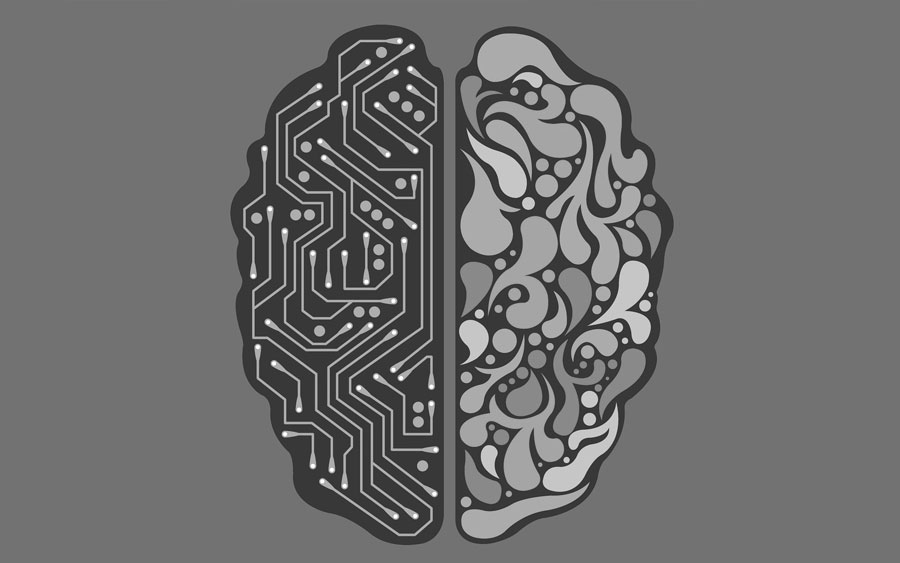User experience is an essential factor that determines whether your digital product will be a success or a failure
As stats claim, 52% of people who had a bad mobile experience are less likely to engage with a company. Hence, it’s crucial to ensure that your app or any other digital product are adequately built and optimised, as this can significantly impact your traffic and, in turn, the bottom line.
However, translating all the different specifications into a seamless and smooth user interface can be tedious and time-consuming.
And yet, it seems that no matter how hard you try, bugs somehow always show up.
Luckily, AI is here and ready to save the day.
Artificial Intelligence sneaked into the UX/UI industry, reshaping it, and successfully providing solutions to many UX and UI problems.
This advanced technology is now able to generate creative designs that seem genuine to users. It also helps the industry by intelligently streamlining repetitive and mundane tasks, speeding up the development cycles, and reducing human errors.
Streamline Your Tasks
There are many tasks UX designers would like to delegate and automate. Things like red-lining specifications such as margin, spacing, and similar elements are just some of many repetitive and tiring time-wasters that prevent designers from focusing on more creative work.
However, they still need to be done, as, without them, the output of the design wouldn’t be clear. As a result, developers wouldn’t be able to interpret it properly.
Artificial Intelligence facilitates these tasks, as it allows designers to turn their design mockups into HTML or CSS. With the help of neural networks, it’s possible to convert their design documents into code and the other way round.
AI-based tools, such as Sketch2Code help designers transform whiteboard sketches to working code – all it takes is uploading an image of the design, and voila! They will get an HTML markup code.
Designers can also increase their productivity by using AI-powered tools that adjust the colour of the images and their size, sometimes even enhancing their quality.
And if you need images or photos for your designs, and you don’t want to use stock photos or have any legal issues, you can visit This Person Doesn’t Exist – a website tool that generates pictures of fictional persons.
You can just pick the photo you like and use it as your prototype, and every time you click the next button, you’ll get a fresh new face that you can use without having to worry about loyalties or copyright.
This AI tool uses a new generative adversarial network (GAN), a technology capable of generating new images and categorising them as either fake or real.
If the image is classified as fake, then the generator tries again until it manages to fool the discriminator and create a plausible photo of a fictional individual.
Besides this, GAN can also convert images into a different season, time of day, and perform all kinds of photo-manipulations that even a trained eye won’t be able to tell apart from the actual photos of existing people.
Improve UX with Personification
In the digital age, personification is key to creating a unique user experience, tailored to the specific needs and interests of each one of your clients. Personalised marketing, dynamic pricing, customer support chatbots are just some of the machine-learning algorithm examples that can be used to customise the customer journey.
For instance, conversational chatbots are all the rage at the moment, as they can bring the user experience to a whole new level.
Thanks to the development of NLP, conversational chatbots have gone a far way from simple robots capable of providing only pre-written answers to your users’ questions to the smart algorithms that are now able to personalise every touchpoint between a user and a brand.
Through the interaction with a user, these chatbots can collect and process vast amounts of information, and they’re able to implement a tailored,customer-centric approach and engage the customer, helping brands create a deeper, meaningful relationship with their customers.
Automate Your Website Building Process
People who are not skilled at coding can take advantage of AI when it comes to building their website in a couple of easy steps.
One of the platforms that can come handy for such purposes is Wix, a website-building service that is backed by AI, and that lets users create a website with easy-to-use drag-and-drop tools.
However, the platforms take user experience very seriously, so it takes into consideration the purpose of your website. Answering different questions will help this AI-based platform personalise your new website, and you can choose between various website types, such as business, e-commerce, blog, or portfolio.
There are other services complete novices can use to create a decent website. Impressly.com is another practical solution that allows you to build a website from scratch, but it can also scan your existing website and suggest some improvements.
AI can also be used to create unique variations of homepages and landing pages for news sits, media brands, and more. Designers have also started to make design localised using AI-based translation.
AI Can Help Deliver the User Experience Customers Want
AI is opening up the whole new world of opportunities to the UI/UX creators, and AI-driven user interfaces and experience are our future.
Implementing AI in your UI system reduces the number of difficulties a user encounters on your website, thus enhancing their experience and keeping your website running well.
Having AI behind the UX design can help improve the user experience, as it can create numerous design variations quickly, delivering intuitive and automotive responses to user requests, that are tailored to their needs.
Streamlining tiring and time-consuming apps, AI frees up the time and energy of designers and developers, making them more capable of handling more sophisticated, innovative, and creative work.





